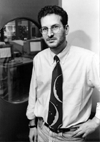 |
CONTACT OFFICE HOURS COURSES PUBLICATIONS STUDENTS CURRICULUM VITAE EXTRA-UNIVERSITY PROJECTS |
Contact information
Maxwell-Dworkin Laboratory, room 24533 Oxford Street
Cambridge, MA 02138
phone: 617-495-2344
fax: 815-572-0216
email:
personal web site: stuartshieber.com
Office hours
By appointment, with Tuesdays, 1:30-3 pm, starting 2/12 especially reserved for meetings in MD245. To arrange a meeting, please send email to my assistant ( ) for an appointment.
Extra drop-in or appointment office hours for before study card day, spring 2012-13 in MD245:
Tuesday 1/29 9:00am-1:30pm
Wednesday 1/30 4:00-5:30pm
Thursday 1/31 1:00-3:00pm
Friday 2/1 3:30-5:00pm (study card day)
Office hours by text or video instant messaging are encouraged. Email me for my iChat-AV/AIM contact information.
Read my diatribe on office hours and faculty-student interaction.
Courses
Spring 2012-2013: CS187: Introduction to Computational Linguistics
Spring 2011-2012: CS96: System Design Projects.
Spring 2010-2011: CS187: Introduction to Computational Linguistics and Empirical and Mathematical Reasoning 11 : Making Sense: Language, Logic and Communication.
Spring 2009-2010: CS287: Natural Language Processing and Empirical and Mathematical Reasoning 11 : Making Sense: Language, Thought and Logic.
Spring 2008-09: CS187: Introduction to Computational Linguistics.
Fall 2007-08: CS187:
Introduction to Computational Linguistics.
Spring 2007-08: CS287: Natural
Language Processing.
2006-2007: on leave.
Fall
2005-06: CS187:
Introduction to Computational Linguistics.
Spring 2005-06: Freshman
Seminar 22k: Can Machines Think? The Turing Test and the Possibility
of Natural-Language Interaction with Computers.
Publications
Listings of my publications, many available over the web are available here. (For the record, my Erdös Number is 3 (Shieber » Rabin » Kleitman » Erdös) tying a former student.)
Students
- Jon Christensen (PhD 1994) → UCSD → Elytics
- Andrew Kehler (PhD 1995) → UCSD
- Stan Chen (PhD 1996) → IBM Research
- Kathy Ryall (PhD 1997) → University of Virginia → MERL
- Lillian Lee (PhD 1997) → Cornell University
- Joshua Goodman (PhD 1998) → Microsoft Research
- Rebecca Hwa (PhD 2001) → University of Maryland → University of Pittsburgh
- Wheeler Ruml (PhD 2002) → PARC → UNH
- Ken Shan (PhD 2005) → Rutgers University
- Rebecca Nesson (PhD 2009) → PRX
- Heather Pon-Barry (PhD candidate)
- Elif Yamangil (PhD candidate)
Extra-University Projects
- Microtome Publishing: Publishing services in support of open access to the scholarly literature.
- Cartesian Products, Inc.
- GetThePatent.com
- Lernout & Hauspie VoiceXpress natural-language technology (now part of Dragon Naturally Speaking)
COMPUTATIONAL APPROACHES TO LANGUAGE AND COMMUNICATIONProfessor Shieber studies communication: with humans through natural languages, with computers through programming languages, and with both through graphical languages. How natural languages are structured to permit efficient communication is a difficult and multi-faceted question, involving issues in linguistics (the syntactic and semantic structure of natural languages), theoretical computer science (the inherent complexity of aspects of human language); computer systems (in connection with the design and deployment of algorithms for natural-language analysis and generation); psychology (human sentence processing and misprocessing); and artificial intelligence (the encoding of general knowledge and its application to the understanding of utterances). To answer such difficult questions, Shieber synthesizes knowledge from several of these fields. In work on the computational properties of grammar formalisms, formal metalanguages for specifying the syntactic and semantic structure of natural languages, he uses techniques from theoretical computer science to analyze the expressivity and computational effectiveness of the formalisms, and builds on algorithms from the field of computer systems. (Such studies shed light on computer languages as well as natural languages. For example, they reveal some deep similarities between the grammar formalisms proposed for natural languages and the static semantics of programming languages.) In his research on psycholinguistics, a simpler model of human misparsing of sentences was developed by applying technology from the efficient parsing of programming languages. Similarly, his research on semantics makes use of the technology of higher-order logic to explicate the workings of elliptical and quantificational constructions of natural language. Professor Shieber also looks at problems in automated graphic design with the aim of developing a more graphically articulate computer. (As human beings have been using natural language for perhaps many hundreds of thousands of years, but widespread use of symbolic graphical languages dates from only the late 18th century, graphical artifacts are quite a bit more conventional, providing some basis for the expectation that building a graphically articulate computer may be much more practical than building a linguistically articulate one.) Many graphic-design problems -- for instance, the automatic layout of network diagrams, and the automatic placement of labels on maps -- are computationally intractable. Good approximate solutions to such problems can however, often be obtained by stochastic methods, and such methods are increasingly becoming a large component of his research. | |||
|
|||